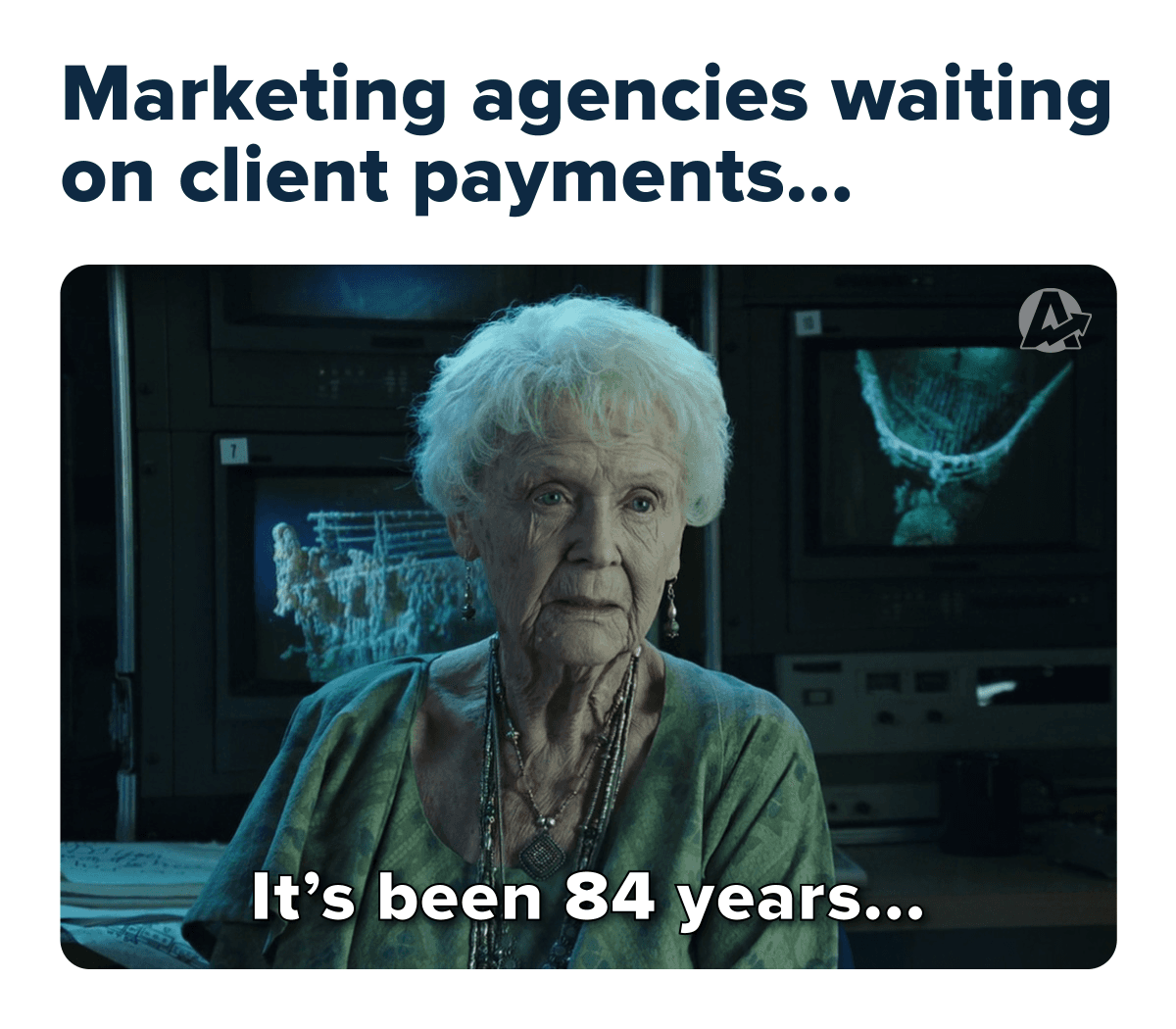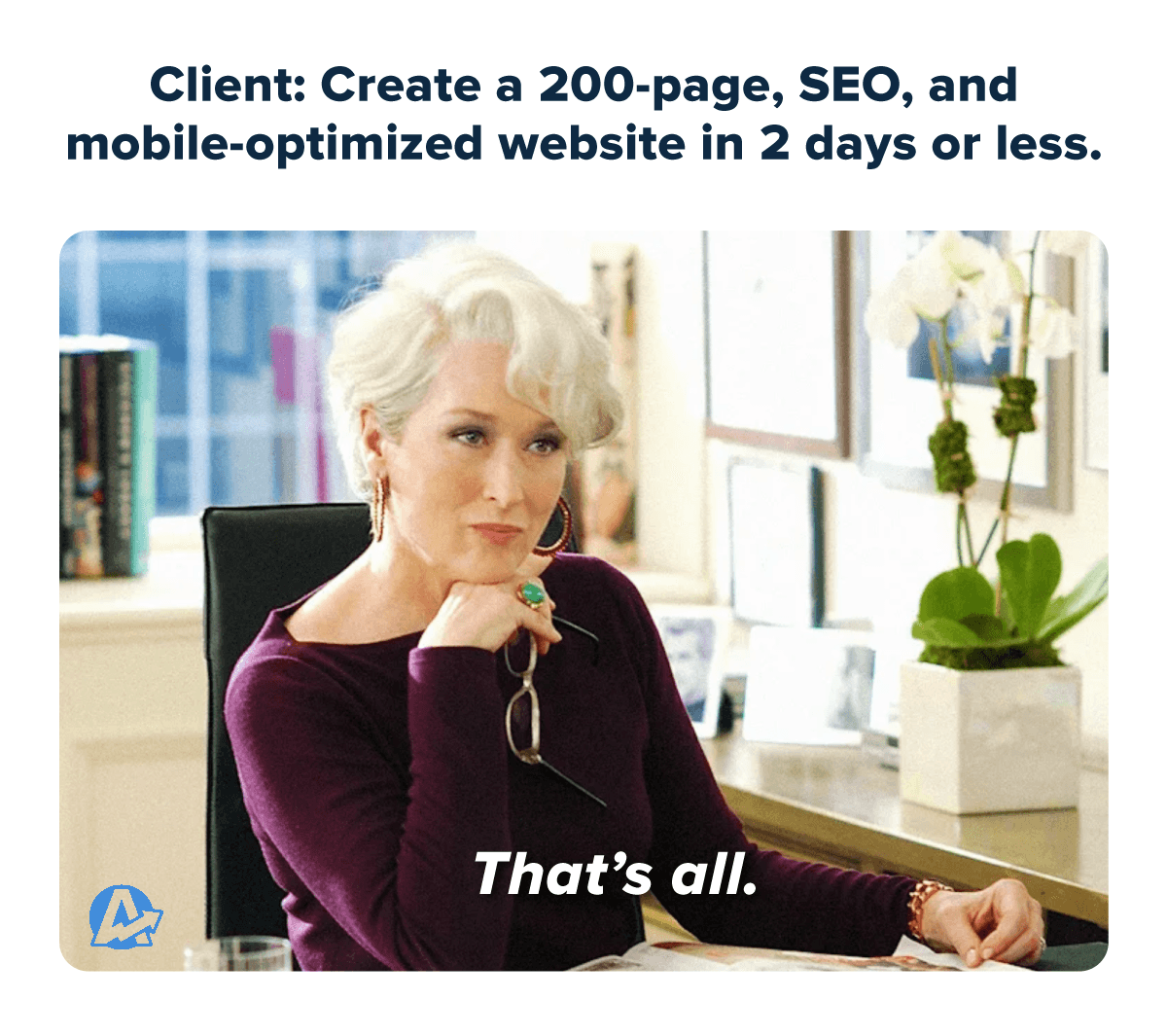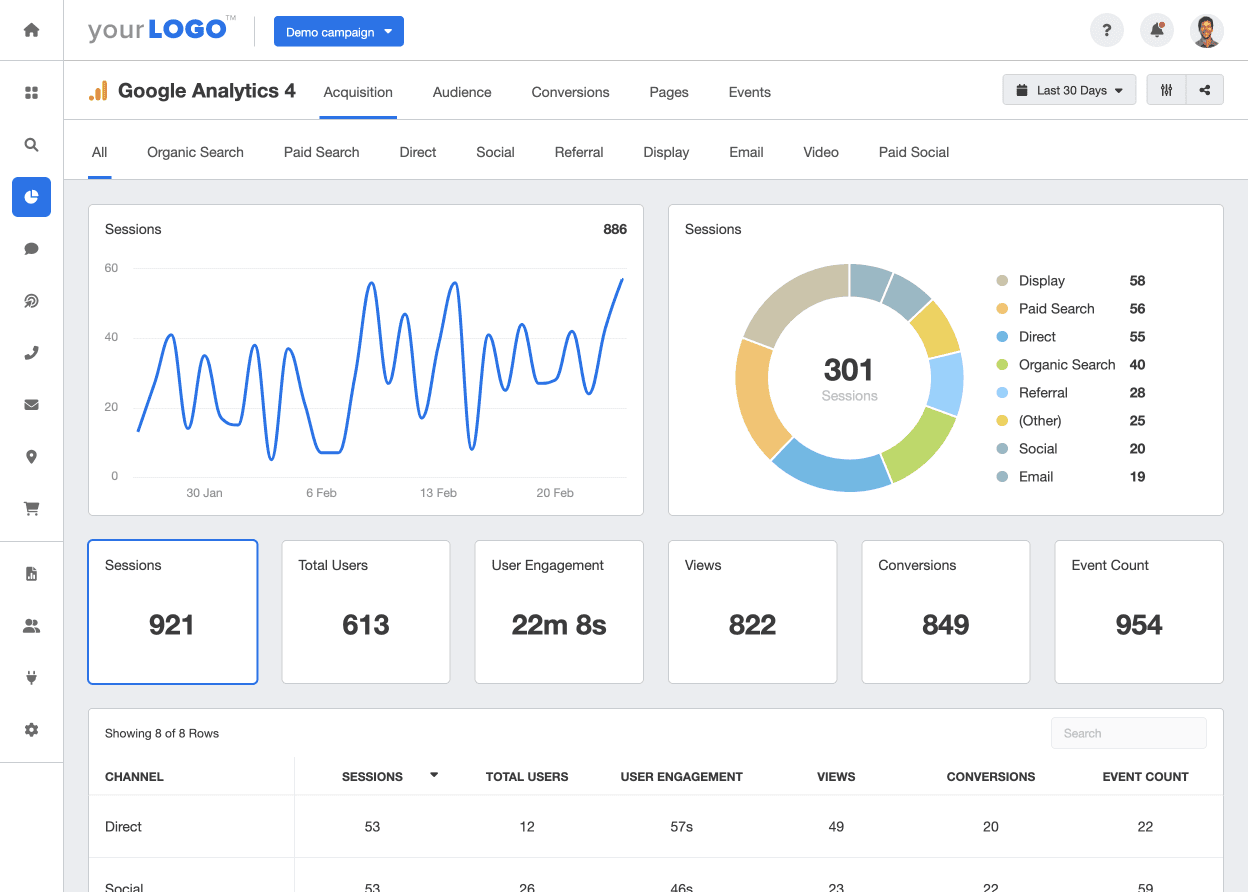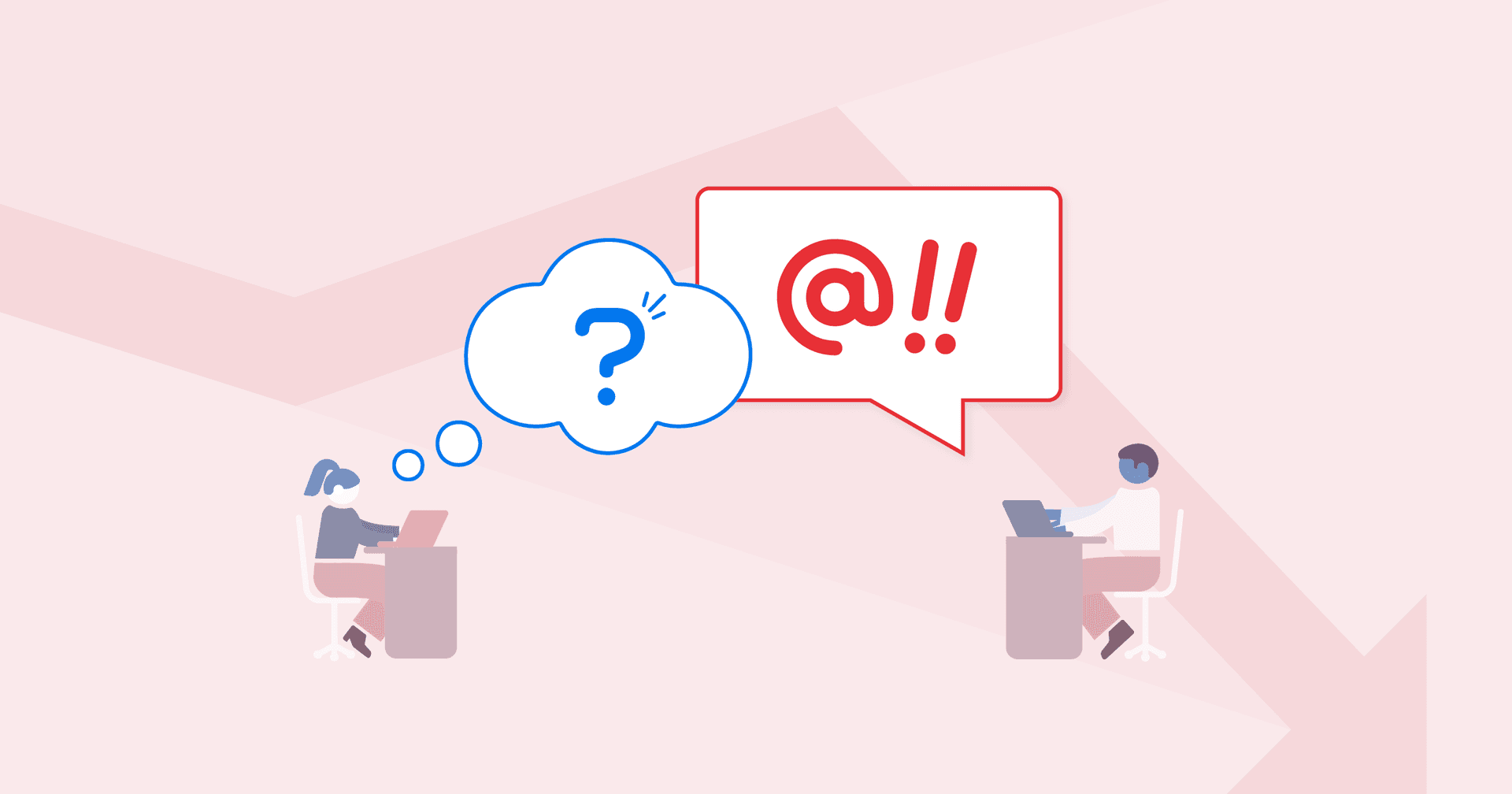Table of Contents
Table of Contents
- When It’s Time To Fire an Agency Client
- When To Send a Client Termination of Services Letter
- Key Sections To Include in Your Agency’s Client Termination Letter
- Sample Contract Termination Letter for Marketing Agencies
- Best Practices for Delivering the News to a Terminated Client
- How To Ensure Smooth Sailing With Future Clients
- The Takeaway
7,000+ agencies have ditched manual reports. You can too.
Free 14-Day TrialQUICK SUMMARY:
Unfortunately, not every agency-client relationship becomes a happily-ever-after story. This article covers how to write a professional client termination of services letter. Find actionable tips for a smooth transition, plus a contract termination letter sample to guide your writing.
Letting go of a client is one of your agency's toughest calls. It’s challenging, often uncomfortable, and usually a last resort.
But when a relationship isn’t working, preparing a contract termination letter is necessary. Firing a client might feel like slamming a door, but it actually swings wide open for clients who genuinely value your work and respect your team’s time.
In this article, we’ll help you spot the red flags that signal it’s time to let go of a problematic client. We’ll then guide you on how to write a professional client termination of services letter to formalize your contract cancellation. Use our sample letter as a template, or follow our tips to draft your own from scratch.
Do not keep bad clients. It causes undue stress and anxiety within the team, ultimately hurts the business, and destroys happiness.
Calum Maxwell, Managing Director, Optimise Online
When It’s Time To Fire an Agency Client
How do you know when it’s time to end a business relationship? These everyday situations signal that you’re dealing with a toxic client who’s more trouble than they’re worth.
Unreasonable Demands: We’ve all had them—the clients who think your agency operates on magic and caffeine, demanding impossible deadlines. Constantly stretching your resources for these clients means other, more reasonable clients get the short end of the stick. If you’re stuck doing mental gymnastics for one client’s “urgent” requests, it might be time to say goodbye.
Frequent Late Payments: Chronic late payers are a big red flag. Every missed payment disrupts your cash flow and sends a clear message: they don’t respect the work your team puts in. If your accountant starts sighing every time this client’s name pops up, it’s a strong signal that they’re not worth the hassle.

Misaligned Values: If you consistently struggle to find common ground with a client, it may be because your values and working norms are misaligned, causing ongoing friction. A healthy amount of friction is acceptable, but once it feels like you’re trying to mix oil and water, you’re better off walking away.
Lack of Respect for Boundaries: Have you ever had a client who emails your team at 10 p.m. on a Saturday, expecting an immediate reply? When a client consistently ignores agreed-upon boundaries, morale suffers. If a single client has the power to turn your team’s day upside down, it’s a good time to consider saying farewell.

Always Begging for a Deal: Ever encounter a client who’s always hunting for a deal, a discount, or even tries to get away with getting you to work for free? If you give them an inch, they’ll take a mile, and it never ends. They’ll squeeze every ounce of value without paying what it’s worth, draining your agency’s resources.
Lack of Trust in Your Expertise: Addressing client concerns is part of the job, but when every decision is met with skepticism, it’s clear that your client doesn’t trust your expertise. This lack of confidence often snowballs, leading to roadblocks and poor results, leaving you wondering why your team is working around the clock to prove itself.
To further illustrate what this looks like in the context of a marketing agency’s day-to-day activities, let’s take a look at a fictional example:
Agency Example:
Ember & King Digital Marketing was thrilled when the agency began working with a new client in the e-learning space. The client was a recognized company in a growing niche–and their budget was impressive.
But within a few months, excitement turned to frustration. The team worked tirelessly to satisfy the client, who insisted on impossible turnarounds, stretched the team thin with “urgent” projects that disrupted schedules for other clients, and even worse—frequently paid late.
Despite the agency’s best efforts to maintain professionalism, the strain was palpable. Team morale plummeted, and internal meetings about the client were filled with eye rolls and exhausted sighs. In a short amount of time, it seemed the client was costing the agency far more than it was worth. It was clear the partnership had already run its course.
In the case of Ember & King, the unravelling of the relationship was obvious to everyone at the agency. Still, leadership struggled to determine the best time to formally end the contract.
When To Send a Client Termination of Services Letter
As with any breakup, timing is everything. Call it quits at an inappropriate time, and the agency risks damaging their reputation. Wait too long and the agency wastes valuable resources that could be better spent on clients who are a better match.
So, when is the best time to hit “send” once you know you’re ready to end a client relationship? Let’s take a look.
Before a Contract Renewal: Sending a termination notice before a contract renewal avoids dragging the relationship out any longer than necessary. This timing respects both parties’ time and avoids unnecessary work on future commitments. To avoid pushback, ensure you’ve met any minimum notice period required in your original contract terms.
At the End of a Project or Billing Cycle: If you’re not on a retainer agreement, sending the termination letter when a project wraps up or before a new billing cycle kicks off is a smooth way to go. Think of it as leaving at intermission—everyone gets to wrap up with minimal disruption and a clean slate.
After Multiple Verbal/Written Warnings: If you’ve already raised concerns, nudged the client with polite reminders, documented your interactions, and still haven’t seen an improvement, it’s time to formalize the goodbye. At this stage, a formal contract termination notice shows that you’ve given it your best shot and are now ready to end things professionally. Sometimes, clients only get the message when reading it in writing.
Agency Example:
In Ember & King Digital’s case, the agency took multiple steps to improve the situation—they implemented clear timelines, set up weekly status calls, and even offered the client customized project plans to better manage expectations.
Despite these efforts, the client continued to disregard agreed-upon boundaries, emailing the team late at night and expecting immediate responses. Payment issues persisted with invoices often delayed for weeks.
After several polite reminders and documented warnings, the agency concluded that the relationship was unfortunately unsustainable. Thankfully, the timing aligned perfectly with the end of a project. This provided Ember & King with an opportunity to present their client termination of services letter at a time that didn’t disrupt ongoing work.
Key Sections To Include in Your Agency’s Client Termination Letter
When writing an effective termination letter, remember that it serves as a legal document to end your contractual relationship. Crafting a formal letter that includes the key elements outlined below will help your agency end the partnership positively and respectfully while fulfilling any remaining contractual obligations.
Here’s a step-by-step guide on what to include in your letter:
1. Opening and Salutation
Start the letter with a professional greeting, addressing the client by name. A direct, formal salutation not only helps ease into the message but also reflects your agency’s professional tone.
2. Statement of Termination
In the next section, directly state the letter's purpose: to formally end the service agreement. Be explicit about the intention to end the deal, ensuring no ambiguity about the termination.
3. Reason for Termination
Include a brief explanation of the reason to terminate the agreement. Keep this part concise and neutral. Including a brief explanation of the reason for termination can provide clarity, though it is optional. Whatever you do, ensure this explanation avoids blame at all costs. Instead, reference professional reasons, such as a change in service focus or a need to streamline resources. A well-worded reason maintains a respectful tone while showing transparency.
4. Termination Date
Specify the exact termination date. Including a specific date provides a clear deadline for both parties to fulfill any remaining contractual obligations. Ensure that the date complies with any minimum notice period required in your initial contract, helping both sides plan for the transition.
5. Transition Details
Outline high-level details of all remaining project tasks. This may include a summary of outstanding payments, remaining deliverables, and specific project deadlines. This section reassures the client that your agency will meet all obligations through to the end of the service period, minimizing disruptions.
6. Expression of Gratitude
Conclude the letter by expressing gratitude for the partnership. Ending with a simple thank you and well-wishes for the client’s future success leaves a lasting positive impression.
Sample Contract Termination Letter for Marketing Agencies
Looking to save time on writing your letter? Here’s a contract termination letter sample to use as a basis for your formal letter.
SAMPLE CLIENT TERMINATION LETTER
Dear (client name),
This letter serves as formal notification that (agency name) has decided to conclude its service agreement with (client company name), effective (termination date).
This decision comes after careful reflection and reassessment of our client commitments and resources, and it is not one we made lightly. Recent circumstances have led us to conclude that we can no longer provide (client company name) with the level of support and resources needed to achieve the desired outcomes and business needs.
We understand this may cause some disruption and are committed to ensuring a seamless transition for your termination process. To help facilitate this, we have summarized the remaining deliverables and payments under the retainer agreement below.
MONTH 1
- List of remaining services + deliverables:
- Deadline:
- Remaining payment amount:
- Payment deadline:
MONTH 2
- List of remaining services + deliverables:
- Deadline:
- Remaining payment amount:
- Payment deadline:
MONTH 3
- List of remaining services + deliverables:
- Deadline:
- Remaining payment amount:
- Payment deadline:
We sincerely thank you for the opportunity to collaborate and for your confidence in our team. Working together has been a pleasure, and we wish (client company name) success in achieving (specific business goals).
Thank you for your understanding and partnership. Please don’t hesitate to keep in touch.
Warm regards,
(Sender name)
If you're concerned about any potential legal ramifications of a client termination, it's always best practice to have your termination letter reviewed by a legal professional.
Best Practices for Delivering the News to a Terminated Client
Even when following a template for your client termination letter, take the time to revise your wording and ask for input from other team members before sending it. Pay particular attention to those team members who have had the closest contact with the client–they’ll have the firmest grasp on the reasons for the dissolution of the relationship, and you’ll want to confirm that all the facts of the transition period tasks are correct.
Hold off on sending the letter as soon as you're done editing it. While crafting a thorough letter covers the legal implications of ending a partnership, it’s common courtesy to break the news to your client verbally first through a call or meeting.
During this meeting, prepare to answer questions about your agency’s reasons for ending the partnership, and explain the steps that will be taken to ensure a smooth transition. As in your letter, it’s critical to maintain professionalism and avoid blaming the other party–simply state the facts and emphasize your willingness to smooth out the transition.
After verbally informing your client about the partnership's end, finalize the termination process by sending the anticipated formal letter.
Let’s explore what this looks like for Ember & King:
Agency Example:
Ember & King’s Senior Account Manager got to work drafting a professional and thorough client termination letter. To maintain professionalism, the letter remained neutral, focusing on the agency’s decision to “realign resources” rather than placing blame.
After drafting, she passed it over to agency ownership to ensure that all pertinent information had been included.
Next, the agency booked a virtual meeting with their problematic client. Nerves were running high, but the team handled the interaction with a great deal of professionalism. In the call, they went over the letter with the client, answered questions, and clearly communicated next steps for the transition.
While the client wasn’t necessarily thrilled with the decision, the conversation remained positive overall, and the Ember & King team was confident that their reputation would remain intact.
After giving the client a few hours to digest and accept the news, Ember & King’s team sent off their expected termination letter, formalizing the end of their agreement.
How To Ensure Smooth Sailing With Future Clients
It’s not always easy to tell who will be a difficult client during the client acquisition process, but it is possible to create a framework for client success to avoid future friction. Outlining your agency’s expectations and communication practices helps create a smoother working relationship from the get-go.
Setting up structured reporting is vital to healthy agency/client relationships. Regular, transparent reports keep your clients informed on progress, answers repetitive questions, and helps mitigate potential issues before they escalate.

Build stronger, more productive relationships with clients and help them easily understand campaign performance results. Try AgencyAnalytics free for 14 days.
Agency Example:
Moving forward, Ember & King ensured that each new client was onboarded with a custom, white labeled dashboard from AgencyAnalytics. The team added custom goals and annotations to keep clients up to date on the latest activities, and leveraged messaging features to stay in touch frequently between reporting periods. Since clients had the ability to check on results 24/7, they felt less inclined to reach out to the agency on weekends, reducing scope creep.
The Takeaway
While letting go of a client is never easy, delaying the decision only prolongs the strain on your agency’s resources and energy. Avoiding the discomfort of sending your contract termination letter may seem easier in the moment, but remember this: every day you put it off, you’re only sacrificing opportunities to work with clients who align with your values and truly respect your expertise.
Agency Example:
Since parting ways with their client, Ember & King Digital agency has seen significant improvements in team morale. The once-dreaded late-night “urgent” emails are a thing of the past, and staff feedback surveys report an increase in job satisfaction. Letting go of the misaligned client has not only improved workflow but has also reinforced a culture of respect and professionalism.
The team now has more bandwidth to focus on considerate clients who respect boundaries, resulting in higher-quality work and greater client satisfaction. With resources no longer stretched thin, the agency has welcomed two new e-learning clients and is now positioned to grow sustainably by focusing on partnerships that drive long-term success.
Don’t let the fear of uncomfortable conversations keep you tied to a professional relationship that holds your agency back. Taking that step forward demonstrates confidence in your agency’s standards and a commitment to meaningful partnerships. Trust in your decision, and embrace the future client relationships waiting to thrive under your agency’s care.
You do your best work when you have a strong relationship with your client. Don't sacrifice that for someone who isn't the right fit for you and your business. In my experience, each time I've made this call, it's opened up room for a new opportunity with an ideal client.
Brittany Woitas, Founder, Kōvly Studio

Written by
Sylva is an expert content writer with over 10 years of experience in tech and SaaS, offering first-hand insight into agency needs from her background in advertising.
Read more posts by Sylva SivzattianSee how 7,000+ marketing agencies help clients win
Free 14-day trial. No credit card required.






